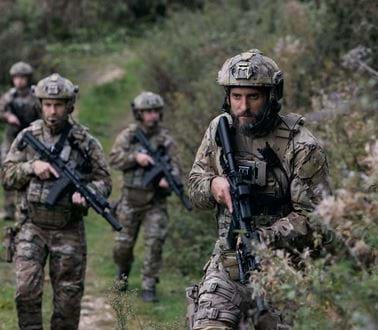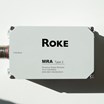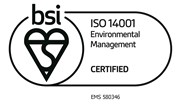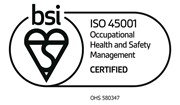
Improving battlefield efficiency
On the modern battlefield, be it land, air or sea – the integration of autonomy and artificial intelligence (AI) is transforming the way military allies approach efficiency, decision-making, and resource management.
Geopolitical landscapes are evolving and becoming more and more complex, and the pressure to innovate and adapt has never been greater. Roke is very much at the forefront of this bow wave and our experience in developing software architectures that take AI and Machine Learning (ML) and use it to great effect is foundational to our intelligence work. It might be deciding where to deploy human resources, maybe it’s where to deploy drone technology, or perhaps it’s about where to not be – either way cutting-edge technologies are streamlining operations, improving battlefield efficiency, and laying the groundwork for long-term sustainability.
Streamlining defence with advanced technology
The defence sector relies heavily on actionable intelligence and swift decision-making – often with humans doing the grunt work – but it doesn’t have to be so time consuming. AI and predictive analytics are revolutionising battlespace management by delivering real-time insights across all domains—land, sea, air, space, and cyber. These tools enable leaders to anticipate potential threats and deploy resources more effectively, enhancing mission success rates – as well as enhancing human performance and operational lethality.
As we’ve seen in the Ukraine, autonomous systems are also playing a vital role in threat detection and mitigation. By tracking and analysing the movements of adversaries, these systems reduce the burden on human operators, allowing them to focus on higher-order decision-making.
For example, uncrewed aerial systems (UAS) can conduct surveillance in hostile areas, gathering critical information without putting human lives at risk – which leads to more capacity where it can be more effectively deployed.
The availability of real-time data is empowering commanders to make efficient, data-led decisions – such as on multi-national exercises at sea like NATO IC24SHINE. Access to accurate, up-to-date information ensures that operations are not only faster but also more informed, reducing the likelihood of errors in dynamic environments. But it isn’t all about that, it’s also about ensuring efficiency and doing more with less.
Improving battlefield efficiency through digital integration
Budgets across the world are being squeezed, and enhancing efficiency on the battlefield through digital transformation is critical. It isn’t just the data platforms that are helping this. Wearable technologies and the Internet of Things (IoT) are transforming the "soldier as a platform" concept for which Roke has world-lead capability. These innovations monitor soldier health, track performance, and optimise individual and unit-level operations, ensuring maximum effectiveness in the field.
Digital twins—a virtual representation of physical assets—are another game-changing innovation. By simulating mission scenarios and resource allocation, digital twins enable military planners to visualise outcomes and optimise strategies. This ensures that headquarters operations are streamlined and that commanders have better situational awareness.
Additionally, augmented reality (AR) and virtual reality (VR) technologies are reshaping how soldiers train and prepare for missions. These immersive tools provide realistic simulations of combat scenarios, enhancing readiness while reducing training costs. VR can replicate urban warfare environments, allowing troops to practice manoeuvres without needing a physical training ground – or endangering lives.
Long-term efficiency through autonomy and AI technologies
Beyond immediate battlefield applications, autonomy and AI-driven technologies offer long-term benefits for defence efficiency. By automating data analysis and routine tasks, these tools free up human resources for critical decision-making. ML algorithms can process vast amounts of data at speeds impossible for humans, ensuring fiscal efficiency and better allocation of resources.
Interoperability is a key focus area in integrating autonomous systems. Defence organisations are working to ensure that physical and digital platforms can collaborate seamlessly, regardless of their origin or data format.
This interoperability enhances coordination among allies and reduces operational friction in multinational missions – and metadata can help distinguish between what can be shared and what can’t, leading to less discussions on legality and more efficient operations.
This strategic integration of autonomy and AI into defence infrastructure ensures safer and more efficient operations. Autonomous vehicles, robotic systems, and AI-powered analytics not only improve mission success rates and lethality but also reduce the risks associated with human error. This approach aligns with the broader goal of creating a more secure and resilient defence ecosystem.

Changing Worlds through collaboration in defence
Integrating autonomy and AI into defence operations will mark a pivotal shift in how militaries approach efficiency and effectiveness. By streamlining decision-making, enhancing battlefield capabilities, and planning for long-term sustainability, these technologies have the potential to reshape the defence landscape for good – from supply chain to operations. As the sector continues to evolve, the emphasis on interoperability, collaboration, and real-time data will be critical in maintaining a strategic edge against emerging hybrid threats that will emerge and increase in frequency as time goes by.
Related news, insights and innovations
Find out more about our cutting-edge expertise.



























